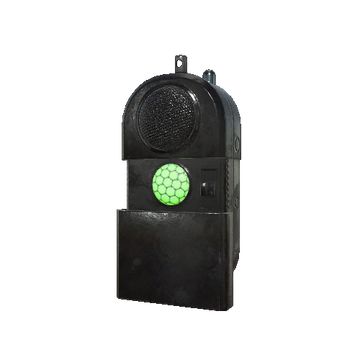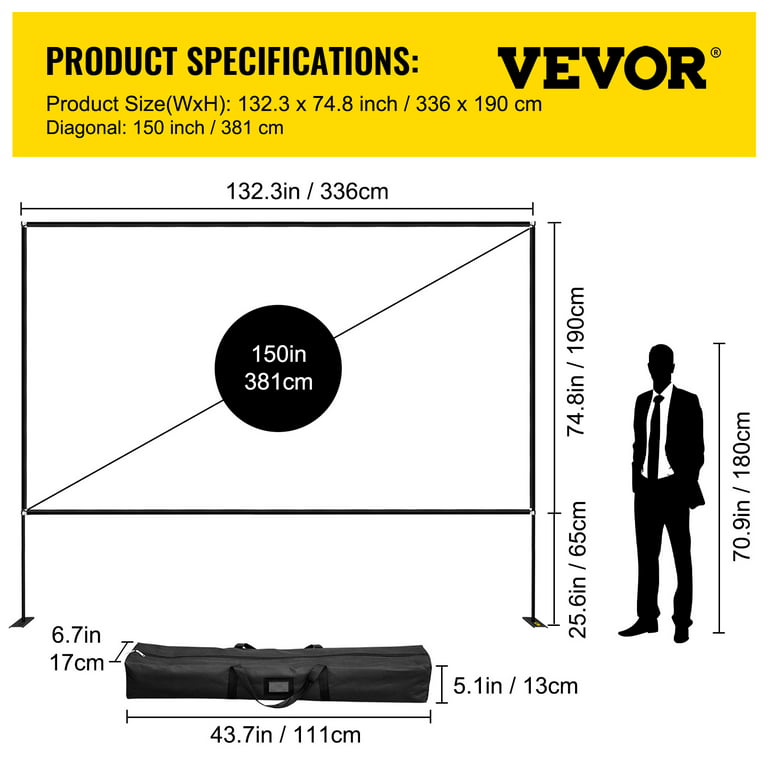Decoding the Optimal Aspect Ratio for Your Projector: An Enlightening Guide
Introduction
Whether it's for professional presentations or home theatre systems, choosing the right aspect ratio for your projector can be a game-changer in providing optimal viewing experiences. This comprehensive guide is designed to demystify aspect ratios, explain their importance for projectors, cover common variations, and provide essential tips for selecting the perfect one for various use scenarios.
What is an Aspect Ratio and Why is It Important for Projectors?
An aspect ratio plays a critical role in shaping the viewing experience, and when it comes to projectors, this becomes even more important. But what exactly does this term signify?
- Aspect ratio defined: In basic terms, an aspect ratio relates to the proportional dimensions of a display image. Expressed in a ratio format such as '4:3' or '16:9', these numbers depict the width and height of the image, respectively.
- Importance in projectors: The aspect ratio determines how your projector will display content sourced from various devices. A compatible aspect ratio ensures that the displayed image dimensions correctly mirror those of the source material.
- Potential problems with incorrect aspect ratios: Selecting an unsuitable aspect ratio for your projector can negatively impact the viewing experience. It can lead to distorted or stretched images, making the content appear unnatural and causing viewers discomfort.
Therefore, to maintain an undistorted image quality and elevate your viewing experience, understanding your projector's aspect ratio and ensuring it's aligned with the source content is crucial. The correct aspect ratio will guarantee image accuracy and optimal utilization of the projector screen space.
Exploring Common Aspect Ratios: Which One Is Right for Your Projector?
When choosing an aspect ratio for your projector, understanding the common types offers an intelligent starting point. Let's delve into the three principal aspect ratios, their characteristics, and instances they're best suited for:
1. 4:3 — The Standard Dimension:
- Description: Trademark aspect ratio for traditional TV broadcasts, early computer monitors, and classic projectors.
- Proportional Relationship: Offers a near square view—ideal for slideshows and presentations.
- Best Suited For: Businesses and educational institutions for showcasing presentations or displaying photos.
2. 16:9 — The Widescreen Standard:

- Description: Holds the position as the most prevalent aspect ratio for the modern TV industry, online video platforms, and HD broadcasts.
- Proportional Relationship: Provides a rectangular, cinematic view, tailored to the experience of movie theatres.
- Best Suited For: Home theater enthusiasts and gamers - a majority of films, sports broadcasts, and video games are designed to fit this aspect ratio.
3. 16:10 — The Balance Between Work and Entertainment:
- Description: A middle ground between 4:3 and 16:9, handy with the widening view of laptops and work monitors.
- Proportional Relationship: Offers a slightly taller viewing area than 16:9 to reduce vertical scrolling.
- Best Suited For: Workplaces and colleges - it's a fitting match for slide presentations and web browsing while still serving home entertainment needs.
In a nutshell, be it sharing the visual experience of a blockbuster movie, delivering a captivating presentation, or merely browsing the web, there's an aspect ratio designed to optimize your experience. Your choice depends largely on the nature of the content you plan to display and the environment in which your projector is set to perform.
What is a Good Aspect Ratio for a Projector and How It Shapes Your Viewing Experience?
Identifying the ideal aspect ratio for a projector heavily hinges on its primary purpose:
- Movies or Entertainment: If the main purpose is to watch films or play games, a 16:9 ratio offers a cinema-like, immersive experience since most movie formats use this aspect ratio.

- Presentations or Photos: When used for displaying presentations or photographs, a 4:3 aspect ratio is often more suitable given that it aligns better with most presentation formats and gives a square-like view.
The aspect ratio you choose plays an instrumental role in defining the quality of the overall viewer experience. It significantly influences:
- Display Quality: An appropriate aspect ratio contributes to high-quality picture reproduction, enhancing the visual impact of the projected content.
- Dimensional Accuracy: The fitting aspect ratio ensures the dimensionally accurate representation of the projected content, preventing image distortion.
However, selecting a non-optimal aspect ratio may result in less than ideal viewing experiences:
- Image Distortion: If the aspect ratio does not align with the source content, it could lead to stretched or skewed images.
- Black Bars: An inappropriate aspect ratio may also generate black bars around the image. This is especially noticeable when projecting widescreen (16:9) content on a standard dimension (4:3) screen.
In conclusion, a fitting aspect ratio can significantly boost the quality of the viewing experience by providing an accurate, undistorted display. In contrast, a non-optimal aspect ratio may lead to unsightly image distortion or blank spaces. Identifying the primary use of your projector will guide you in selecting the best aspect ratio, enhancing your viewing experience.
Practical Tips for Choosing the Perfect Aspect Ratio Based on Different Use Scenarios
Navigating the complex world of aspect ratios for your projector can seem daunting. However, understanding your usage needs, and catering to that can make the process simpler. Here are some practical tips to consider:
1. Identify Your Primary Usage: Your usage scenario plays a pivotal role in determining the most suitable aspect ratio.
- *Movies or Gaming:* If you're a movie enthusiast or a gaming aficionado, the 16:9 aspect ratio should be your go-to for an immersive viewing experience. Most films and games are created in this widescreen aspect ratio, which makes your content look stunning.
- *Presentations or Photos:* On the other hand, if the projector is chiefly for presentation purposes or to exhibit photos, the 4:3 aspect ratio is to your advantage. It aligns well with most presentation slides, software formats, and also beautifully captures the entire breadth of the photo.
2. Consider the Projector's Native Aspect Ratio: Native aspect ratio is the ratio that your projector is designed for, which means projecting in this ratio will yield the best results. Using a different aspect ratio could result in image distortion or unused screen space. It's essential to match your content's aspect ratio with the projector's native one for best results.
3. Adjust Your Projector's Settings: Fine-tuning your projector's settings could elevate your viewing experience. Most modern projectors allow you to tweak the aspect ratio settings, enabling you to match it with the aspect ratio of the source content. This step ensures you get a clear and unaltered image every time.
In conclusion, the correct aspect ratio selection is thrillingly subjective, as it relies heavily on personal preference and usage requirements. These guidelines aim to streamline the process and help you enjoy an enhanced and high-quality viewing journey with your projector.
Conclusion
Choosing the correct aspect ratio for your projector can significantly enhance your viewing experience. Considering your primary usage, the native aspect ratio of your projector, and adjusting settings to match your content are crucial steps to ensure quality projection. Hopefully, this guide helps make the selection process simpler and aids in achieving a superior visual experience.
Related FAQs about what is a good aspect ratio for a projector
How does the aspect ratio impact the projector’s image quality?
The aspect ratio significantly influences the projector's image quality. The correct ratio ensures accurate, undistorted, and clear image representation, positively impacting the viewing quality. On the contrary, an aspect ratio incompatible with the source content can result in image distortion, skewing, or unwanted black bars, degrading the image quality.
Can I use multiple aspect ratios in one projector?
Yes, modern projectors often support multiple aspect ratios. However, every projector has a 'native aspect ratio,' which provides the best results. While other ratios may be employed, they could lead to image distortion or unused screen space.
When should I use a 16:9 aspect ratio versus a 4:3 one?
If your primary use is watching movies or playing video games, then a 16:9 aspect ratio is suitable as it offers a cinematic, widescreen experience. However, if you're mainly using the projector for presentations or displaying photographs, a 4:3 aspect ratio is often more suitable, providing a square-like view.







